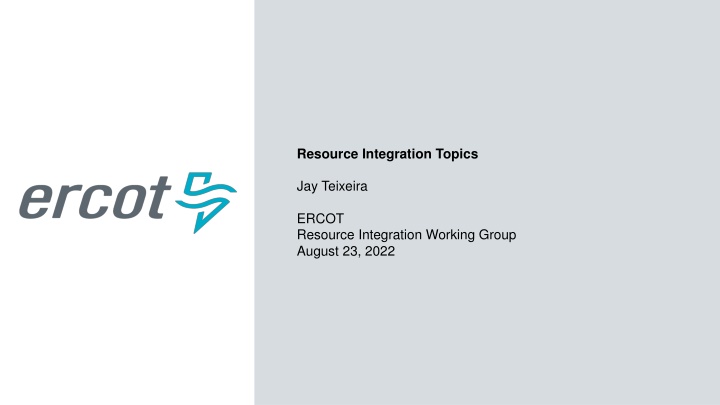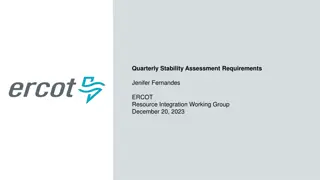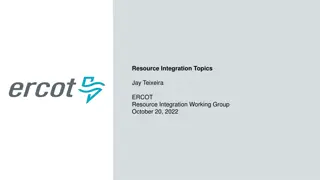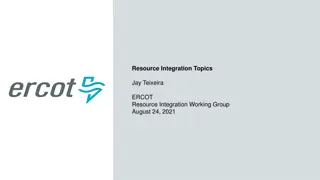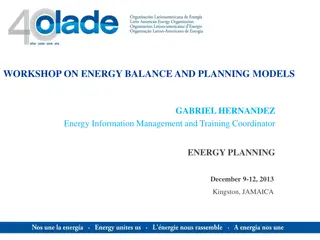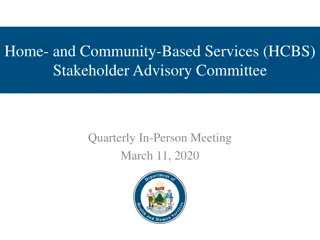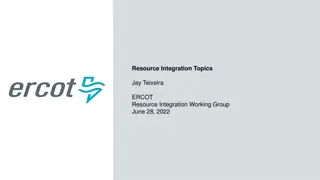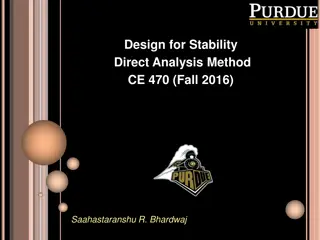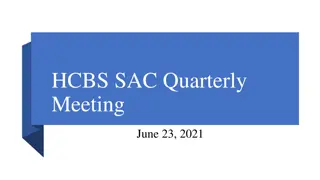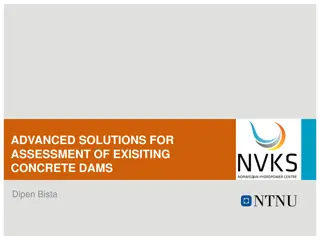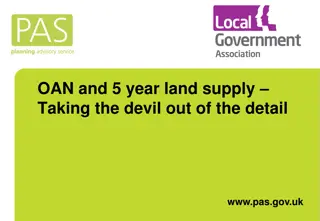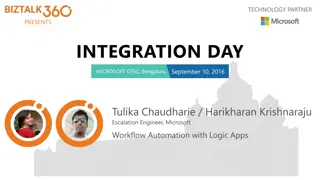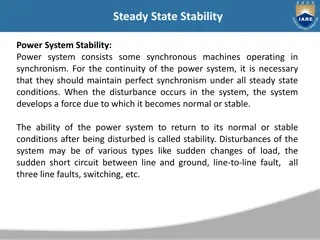Resource Integration Topics and Quarterly Stability Assessment Planning Guide
The content covers Resource Integration topics discussed in the ERCOT working group, including Quarterly Stability Assessment (QSA) planning guidelines, issue resolution strategies, and the current process for large generation projects. Key points include deadlines, synchronization dates, model quality tests, and study completion milestones. The detailed timeline and requirements for simultaneous screening and full interconnection studies are also outlined.
Download Presentation

Please find below an Image/Link to download the presentation.
The content on the website is provided AS IS for your information and personal use only. It may not be sold, licensed, or shared on other websites without obtaining consent from the author.If you encounter any issues during the download, it is possible that the publisher has removed the file from their server.
You are allowed to download the files provided on this website for personal or commercial use, subject to the condition that they are used lawfully. All files are the property of their respective owners.
The content on the website is provided AS IS for your information and personal use only. It may not be sold, licensed, or shared on other websites without obtaining consent from the author.
E N D
Presentation Transcript
Resource Integration Topics Jay Teixeira ERCOT Resource Integration Working Group August 23, 2022
Quarterly Stability Assessment (QSA) Planning Guide 5.9 Next Deadline for QSA All-Inclusive Generation Resource Initial Synchronization Date Upcoming January, February, March Last Day for an IE to meet prerequisites as listed in paragraph (4) below Prior August 1 Completion of Quarterly Stability Assessment End of October Prior November 1 End of January Upcoming April, May, June Prior February 1 End of April Upcoming July, August, September Prior May 1 End of July Upcoming October, November, December If a GINR is not included in QSA, its Initial Synchronization date will be automatically delayed to the next quarter 2
Quarterly Stability Assessment (QSA) Planning Guide 5.9, Quarterly Stability Assessment Issue s seen in previous QSA s 10 day comment period for FIS Needs to be complete before QSA deadline TSPs need to plan for it Dynamic/PSCAD Model Review Dependent on FIS Stability study Need to meet PG 6.9 15 to 30 days prior to QSA deadline PSSE Model Quality Test Required PSCAD Model Quality Test and Unit Model Validation required TSAT Model Required If PSSE model is UDM, then TSAT model should be UDM 3
Current Process for Large Generation Project Wanting Simultaneous Screening Study and Full Interconnection Study (No Construction Bottleneck) 20 Months Assumptions IE submits correct data IE meets all milestones IE does not change equipment TSP has no backlog 6/21/2020 Part 1 Approval 2/1/2020 QSA Deadline 5/1/2020 QSA Complete 7/1/2020 Part 2 Approval Earliest Sync Based on QSA 7/1/2019 Reactive Study 4/1/2019 SS Complete 1/1/2019 6/1/2020 PLD* INR Request Initiated 9/1/2020 Part 3 Approval 1/1/2019 9/1/2020 TSP Complete FIS (10 months) Range 9 to 13 months Kick-Off -2 weeks Sign Study Scope months Received Payment 1 month SS Study months SC month Dynamic months Facility months ERCOT Approved 11/1/2019 - 2/1/2020 2/1/2020 - 6/1/2020 SGIA, NTP & Financial Commitment Days RARF Submission 7/1/2020 - 9/1/2020 2/1/2020 - 7/1/2020 Testing ~5 months SSR Study Completed and Approved *Interim updates are not allowed for new units. Interim update requests must be approved by ERCOT Network Modeling. Construction time for TSP to construct needed facilities not shown. Start of construction dependent on RE giving TSP Notice to Proceed and providing the Funding to construct the interconnection facilities. Length of time needed for construction depends on facilities being constructed. The PLD shown above is normally after completion of construction. 4
New Process for Small Generators TDSP Work Prior to RIOO Submittal (8 to 10 Months Timeline for Projects After the DGR Moratorium) 5/19/2022 Part 1 Approval 1/14/2022 Review required Submissions 1/31/2022 Registration RARF Approval 10/3/2021 Optional Small Gen Review Meeting 1/18/2022 Review RARF 5/31/2022 Part 2 Approval 1/4/2022 5/4/2022 PLD* 7/31/2022 Part 3 Approval Submit INR in RIOO 10/1/2021 8/1/2022 5/4/2022 - 7/31/2022 2/1/2022 - 5/1/2022 10/1/2021 - 1/1/2022 Commissioning Checklists & Testing Days RARF Submission (Prior to PLD) IE/RE Work with TDSP (IA, System Impact Studies, Interconnection Requirements, Operational Limitations, ETC) *Interim updates are not allowed for new units. Interim update requests must be approved by ERCOT Network Modeling. Construction time for TSP/DSP to construct needed facilities not shown. Start of construction dependent on RE giving TSP Notice to Proceed and providing the Funding to construct the interconnection facilities. Length of time needed for construction depends on facilities being constructed. The PLD shown above is normally after completion of construction. RE should have all TSP/DSP studies and IA complete before requesting the scoping meeting. 5
New Process for Small Generators RIOO Submittal Prior to TDSP Work (8 to 10 Months Timeline for Projects after DGR Moratorium) 8/27/2022 Part 1 Approval 4/30/2022 Registration RARF Approval 4/1/2022 1/9/2022 Optional Small Gen Review Meeting Submit required Submissions 4/14/2022 Review required Submissions 9/5/2022 Part 2 Approval 1/4/2022 8/3/2022 PLD* 4/18/2022 Review RARF Submit INR in RIOO 10/31/2022 Part 3 Approval 1/4/2022 11/1/2022 1/4/2022 - 4/1/2022 8/3/2022 - 11/1/2022 5/1/2022 - 8/1/2022 IE/RE Work with TDSP Commissioning Checklists & Testing Days RARF Submission (Prior to PLD) IE/RE Work with TDSP (IA, System Impact Studies, Interconnection Requirements, Operational Limitations, ETC) *Interim updates are not allowed for new units. Interim update requests must be approved by ERCOT Network Modeling. Construction time for TSP/DSP to construct needed facilities not shown. Start of construction dependent on RE giving TSP Notice to Proceed and providing the Funding to construct the interconnection facilities. Length of time needed for construction depends on facilities being constructed. The PLD shown above is normally after completion of construction. RE should have all TSP/DSP studies and IA complete before requesting the scoping meeting. 6
Miscellaneous Resource Integration Information Case to Use for Screening and Full Interconnect Studies ERCOT changing summer cutoff from June 1 to July 1 Align with SSWG cases Staffing Issues Pause on processing periodic reactive and AVR tests Resume when fully staffed 7
Screening Studies for Simultaneous GIM/FIS Applications Planning Guide 5.3.1, Security Screening Study 5.3.1 Security Screening Study (1) ERCOT will conduct a steady-state Security Screening Study, including power-flow and transfer studies, based on the expected in-service year to identify potential generation dispatch limitations based on the site proposed by the Interconnecting Entity (IE). For each Generator Interconnection or Modification (GIM) submitted for a large generator, (a) The Security Screening Study is a high-level review of the project and generally includes a number of initial assumptions from both ERCOT and the IE. In accordance with P.U.C. SUBST. R. 25.198, Initiating Transmission Service, ERCOT will establish the scope of the Security Screening Study that will include a determination of the need for a more in-depth Subsynchronous Resonance (SSR) study. The SSR vulnerability of all Generation Resources applicable under Section 5, Generator Interconnection or Modification, will be assessed pursuant to Protocol Section 3.22.1.2, Generation Resource or Energy Storage Resource Interconnection Assessment. (b) At its sole discretion, ERCOT may waive the requirement for a Security Screening Study for a GIM. ERCOT has created a Screening Study Template that states the Screening Study has been waived and includes a determination of the need for a SSR study. 8
4 Quadrant Telemetry Check for ESR 4-quadrant BESS unit telemetry check Completed before approval to lift the 20 MVA limit for transmission connected BESS units or before Part 3 testing for DESRs ERCOT will observe a check of the telemetry that demonstrates that it is functioning correctly during a 4-quadrant telemetry check for each of the BESS (battery) units at the station. The amount of BESS unit charging and discharging and leading and lagging reactive power can be small, around 2 - 5 MW and MVAr (or less for DESRs). All BESS unit Reactive Power needs to be shown on the generating unit gross and net MVAr telemetry with zero on the charging load MVAr telemetry, regardless of whether the BESS unit is charging or discharging. 9
4 Quadrant Telemetry Check for ESR MVAR BESS unit discharging MW (shown as positive generator gross and net MW) and exporting MVAr (shown as positive generator gross and net MVAr) BESS unit charging MW (shown as positive charging load MW and Load Resource NPF) and exporting MVAr (shown as positive generator gross and net MVAr) 0 MW + GMV + MW 0 Mvar + MW + GMV 0 MW 0 Mvar MW BESS unit charging MW (shown as positive charging load MW and Load Resource NPF) and importing MVAr (shown as negative generator gross and net MVAr) BESS unit discharging MW (shown as positive generator gross and net MW) and importing MVAr (shown as negative generator gross and net MVAr) + MW - GMV 0 MW 0 Mvar 0 MW - GMV + MW 0 Mvar 10
Active RRs None 11
Other contact information ResourceIntegrationDepartment@ercot.com is distribution list for Resource Integration department Mailing List RESOURCE_INTEGRATION@LISTS.ERCOT.COM 12
Questions? Thank you!
